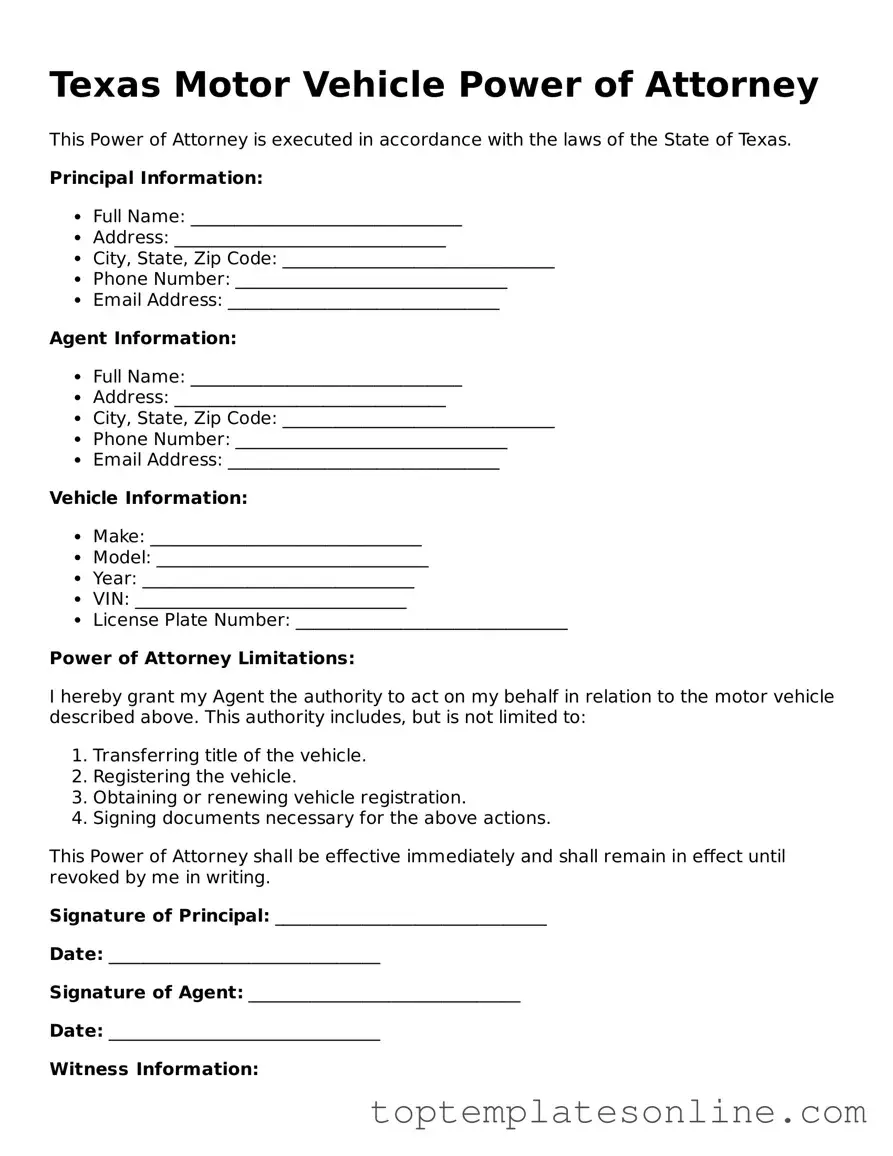Blank Motor Vehicle Power of Attorney Template for Texas State
The Texas Motor Vehicle Power of Attorney form is a legal document that allows an individual to designate another person to act on their behalf in matters related to motor vehicle transactions. This form is essential for facilitating the transfer of ownership, registration, and other vehicle-related tasks without the principal's direct involvement. Understanding its use and requirements can streamline vehicle dealings and ensure compliance with Texas law.
Customize Motor Vehicle Power of Attorney Here
